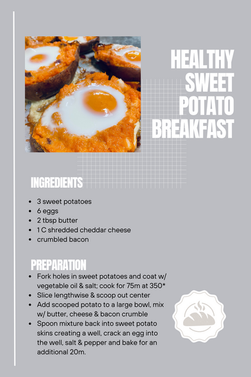Mixing Skincare Ingredients the RIGHT Way
- Lauren Elizabeth

- Mar 1, 2022
- 7 min read
Updated: Mar 11, 2022
Skincare can be so difficult to navigate.

Whether you're new to skincare or have been at it for a while but aren't seeing the results you want, this guide will help you understand what products to use and which products go well together. During my time as a beauty consultant, I've learned all the do's and don't's of skincare, and unfortunately there are quite a few "don't's" that can really hurt your skin. However, the good news is that I'm here to share with you some skincare secrets that very few people know about. I've also done extensive research as to which products are highly loved and recommended by others so that you don't have to! All you need to do is read below to see which product combinations will work best for your skin type, and then make sure you use the right skincare ingredients specific to your needs.
Disclaimer: I am in no way a dermatologist or a doctor. I have gone to extensive skincare classes and am a advocate for good skincare, however, you should always consult with your doctor before starting a new skincare regime.
Why is the right product combination so important? If we start using any old products together, we can actually really damage our skin. That's why I made this guide. I've been there. I've used all the top rated (and very expensive) serums, and oils, and moisturizers, but yet my skin just kept breaking out, my eyes were puffy and I felt like I was doomed to a face like that forever. Meanwhile, it was just my lack of understanding that certain ingredients should NEVER touch other ingredients. Not only was I hurting my face, but I was wasting money on more and more products because I just couldn't understand what I was doing wrong. And let me tell you... more is not always better.
And as you will see, the products I recommend are very affordable. You don't need to pay $200 on a moisturizer. You just need to find the right ingredients that will work together with your skin and not against it.
So without further ado, let's begin!
Skip ahead to:
- Acne
For lines, wrinkles, dark spots, and acne:
Retinol is your best friend! This is one of the most popular skincare ingredients out there, and with good reason. Retinol (aka, vitamin A) is great for skin cell turnover. And the quicker your skin cell turnover, the faster you will see results; which will be smoother, healthier skin.
Word of caution: Retinol can be very drying. It is a very powerful anti-aging ingredient and should be used with caution when first starting out in order to prevent irritation.
Best products to mix with Retinol:
(This will help moisturize your face by holding water molecules to the surface of your skin.)
(This will also help balance out any dryness that retinol's may create)
- SPF
(This is important for every skincare routine and should be put on every single day of the year, even in the winter! SPF will prevent skin cancer, new wrinkles from forming, and dark spots that are produced by the sun. It is especially needed when using retinol products because retinol makes our faces extra sensitive to the sun)
Never Mix Retinol with:
- Vitamin C
(If you really want to use a Vitamin C skin product, you must use them at opposite times of the day. Vitamin C protects your skin from environmental aggressors, while retinol repairs and rebuilds. These two items will have a hard time working together if applied at the same time.)
- Benzoyl Peroxide
(Pairing this with retinol will just be a waste of money as these two ingredients cancel each other out. If applied together, you won't receive benefits from either.)
- AHA/BHA Acids
(These acids are too exfoliating and will only dry out your skin further. Contrary to popular belief, you do not want to dry out your skin even with an acne prone face. The drier your skin, the more your body will work at producing acne forming oils to fight off that dryness)
My favorite trio when it comes to wrinkles, dark spots and acne:
CeraVe Anti Aging Retinol Serum, $14.99
And of course... you don't want to forget about the SPF!
For skin brightening & fighting free radicals:
Vitamin C is a great product for fighting against free radicals. Because it is working at preventing damage, it should be used in the morning. The great thing about vitamin C is that while it's fighting free radicals, it will also be brightening your skin and may even help with lightening dark spots.
Best products to mix with vitamin C:
(Other antioxidants like vitamin E works very well with vitamin C. Vitamin E can help boost the effects of vitamin C)
- SPF
(Vitamin C must be worn under an SPF. The SPF will help protect the skin against UV damage and will also help boost the effects of vitamin C.)
Never mix Vitamin C with:
- Retinol
(As mentioned above, these two ingredients clash with each other. If you would like to use a retinol, you should use retinol at night and vitamin C in the morning. Retinol is used for repairing which is best applied at night so that it can work while your body rests. Vitamin C works at preventing damage, so this should be used during the day when you're in contact with free radicals and other damaging agents.)
My favorite duo when it comes to fighting off free radicals:
And again... you don't want to forget about the SPF!
For improving skin texture & evening out skin tones:
AHA/BHA (aka: salicylic acid, glyoclic acid, and lactic acids) are all great exfoliants. Because of their exfoliating nature, they will help repair skin texture and even out skin tone. Salicylic acid is also very good at treating acne.
A word of caution: AHA/BHA's are very drying and irritating. Please always be sure to use a hydrating product in conjunction with any type of AHA's or BHA's.
Best products to mix with AHA/BHA's:
(It is extremely important to moisturize your skin after applying an AHA/BHA. If you don't moisturize your skin while using AHA/BHA, your skin will get very irritated. Good moisturizing products are: ceramides, petrolatum, hyaluronic acid, & glycerin. These are all extremely hydrating and will help soothe your skin from any harsh ingredients.)
- SPF
(Much like retinol's, AHA/BHA's will make your skin extremely sensitive to the sun. You need to wear SPF no matter the season, weather, or sun exposure.)
Never mix AHA/BHA with:
- Retinol
(Retinol and AHA/BHA are extremely hard on the skin. You should limit your skincare routine to include one, but not both of these. If you were to use both, you may face extreme sensitivity, redness & irritation. And if you're thinking of using one in the morning and one at night, that is also highly inadvisable. You can cause yourself some serious damage.)
My favorite duo when it comes to evening out skin texture:
And you know what I'm going to say... don't forget about the SPF!
For acne:
Benzoyl peroxide is an amazing ingredient when fighting off acne.
Word of caution: This is another extremely drying ingredient. You must be careful when pairing acne fighting products together. You also need to make sure you are properly hydrating your skin or you will cause more harm than good.
Best products to mix with benzoyl peroxide:
- Gently hydrating products
(Hydrating products are so important when using benzoyl peroxide, as benzoyl peroxide is a very drying ingredient.)
- SPF
(Again, this needs to be applied daily)
- Topical antibiotics
(Benzoyl peroxide is safe to use with most prescription acne antibiotics, but always check with your doctor before starting a new regime.)
Never mix benzoyl peroxide with:
- Retinol
(As stated above, these two ingredients cancel each other out. It will frustrate you to see results from neither, and you will just be wasting your money while fighting to see any results)
- Certain prescription acne treatments
(Again, most acne antibiotics are completely safe to use with benzoyl peroxide, but please talk to your doctor before adding new products to your routine. To be on the safe side, you can you benzoyl peroxide in the morning and your prescription treatment at night. Or choose a benzoyl peroxide wash instead of one that stays on your face.)
My favorite acne fighting duo:
And in case you forgot... here's the SPF!
For skin brightening:
Niacinamide (aka: vitamin B3) is great for smoothing out discoloration. It is an anti-inflammatory antioxidant that helps brighten the skin.
Best products to mix with niacinamide:
- Typically safe with most products
(Due to its anti-inflammatory properties, it is very rare to have a negative reaction to this ingredient. It helps to soothe irritation, so using this with other skincare products usually doesn't cause any irritation or discomfort.)
Never mix niacinamide with:
- Vitamin C
(Probably one of the only few ingredients that doesn't work well with niacinamide is vitamin C. Both are antioxidants, but if used together, they can cancel each other out. If you must use both, apply the second serum 10 minutes after letting the first one dry.)
My favorite skin brightening product:
For keeping your skin young and healthy:
SPF. You guys should have known this would have a category all of it's own. That's because SPF is so, so important! SPF is the only thing that will protect you from skin cancer and other harmful elements in the environment. If you don't use SPF, you will face premature aging, and other potentially devastating skin conditions. SPF can and should be layered over any of your other skincare ingredients.
Best products to mix with SPF:
- EVERYTHING!
Never mix SPF with:
- Makeup or Moisturizers
(What do I mean by this? Don't actually mix the two together. I've been guilty of trying to skip a step by squirting my SPF into my foundation and then rubbing them both on together. But your SPF needs to be put on in it's own protective layer. After it dries you can apply your makeup.)
My favorite SPF:
And there you have it! My favorite skincare combinations :)









Comments